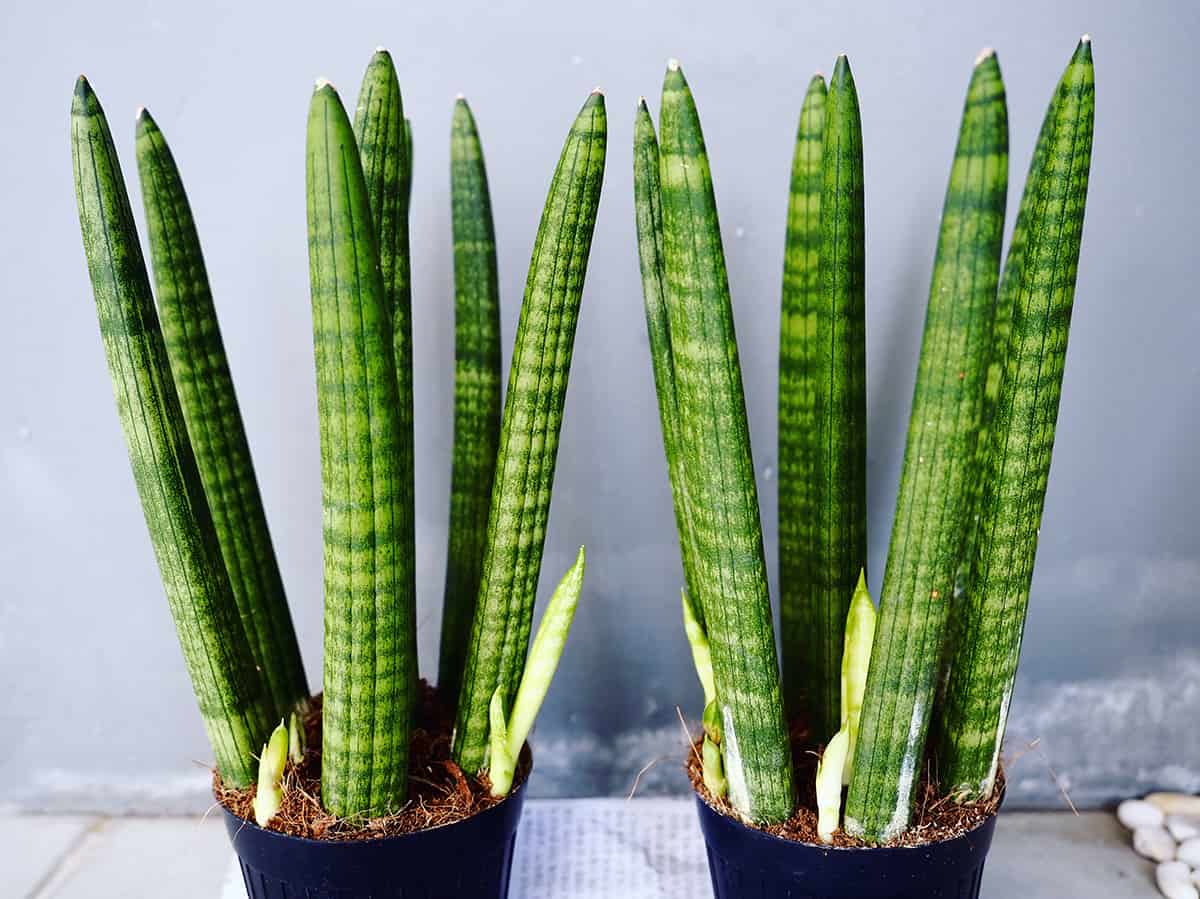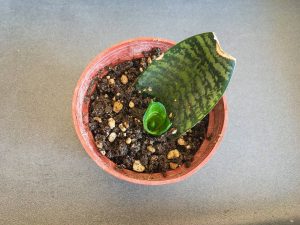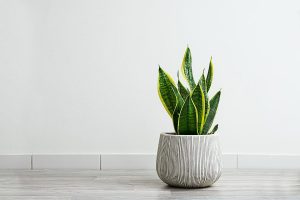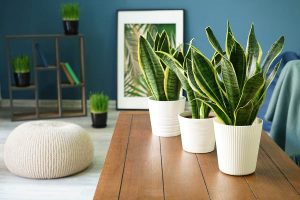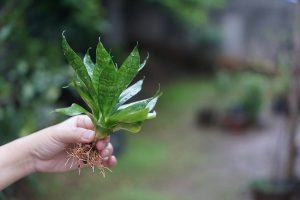The Braided Snake Plant is a species of snake plant which can be braided to create a quirky and unusual look. Like other snake plants, this variety is easy to care for and requires little maintenance. It is native to Angola and makes a great house plant because it thrives in warm environments.
| Botanical name | Sansevieria Trifasciata Cylindrica |
| Common names | Braided Snake Plant, Cylindrical Snake Plant, African Spear Plant, Cylindrical Spear Plant, Elephant’s Toothpick |
| Plant family | Asparagaceae |
| USDA hardiness zone | 10 – 11 |
| Mature height | 5 feet |
| Mature spread | 2 feet |
Table of Contents
Varieties of Braided Snake Plant
The Braided Snake Plant is, of course, a snake plant that has been manually coaxed into shape to take the form of a braid. The species of snake plant which is used for this is the Cylindrical Snake Plant, botanically known as Sansevieria Trifasciata Cylindrica.
The foliage of this plant is pliable and therefore suitable for braiding; however, you can also let the plant grow naturally to take a more casual form. When the plant is not braided, the leaves will grow vertically in a directly upward position, and some may begin to lean out on a diagonal angle with age and weight. Other varieties of snake plants which bear resemblances to the Braided Snake Plant include:
Sansevieria Ballyi
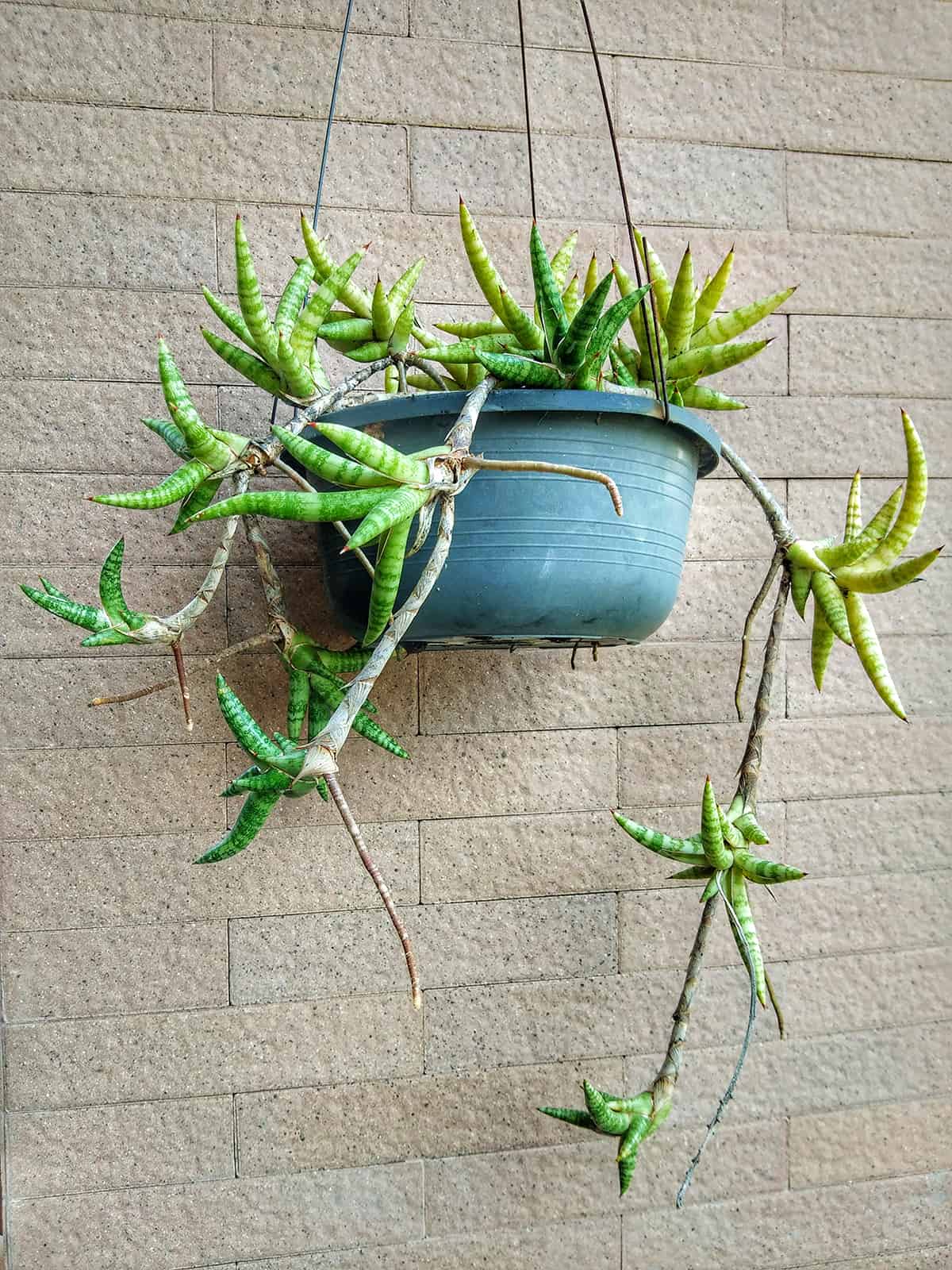
This snake plant, also known as Dwarf Sansevieria, has foliage that closely resembles that of the Braided Snake Plant. Like the Braided Snake Plant, the Dwarf Sansevieria produces cylindrical shaped leaves that gently taper to come to a pointed end. The Dwarf Sansevieria, as you might expect, is considerably smaller than the Braided Snake Plant.
It typically will not grow taller than a foot tall, compared with the Braided Snake Plant which can reach heights of 5 feet in the wild, though as a houseplant more commonly tops out at between 3 and 4 feet in height.
Sansevieria Trifasciata ‘Black Gold’
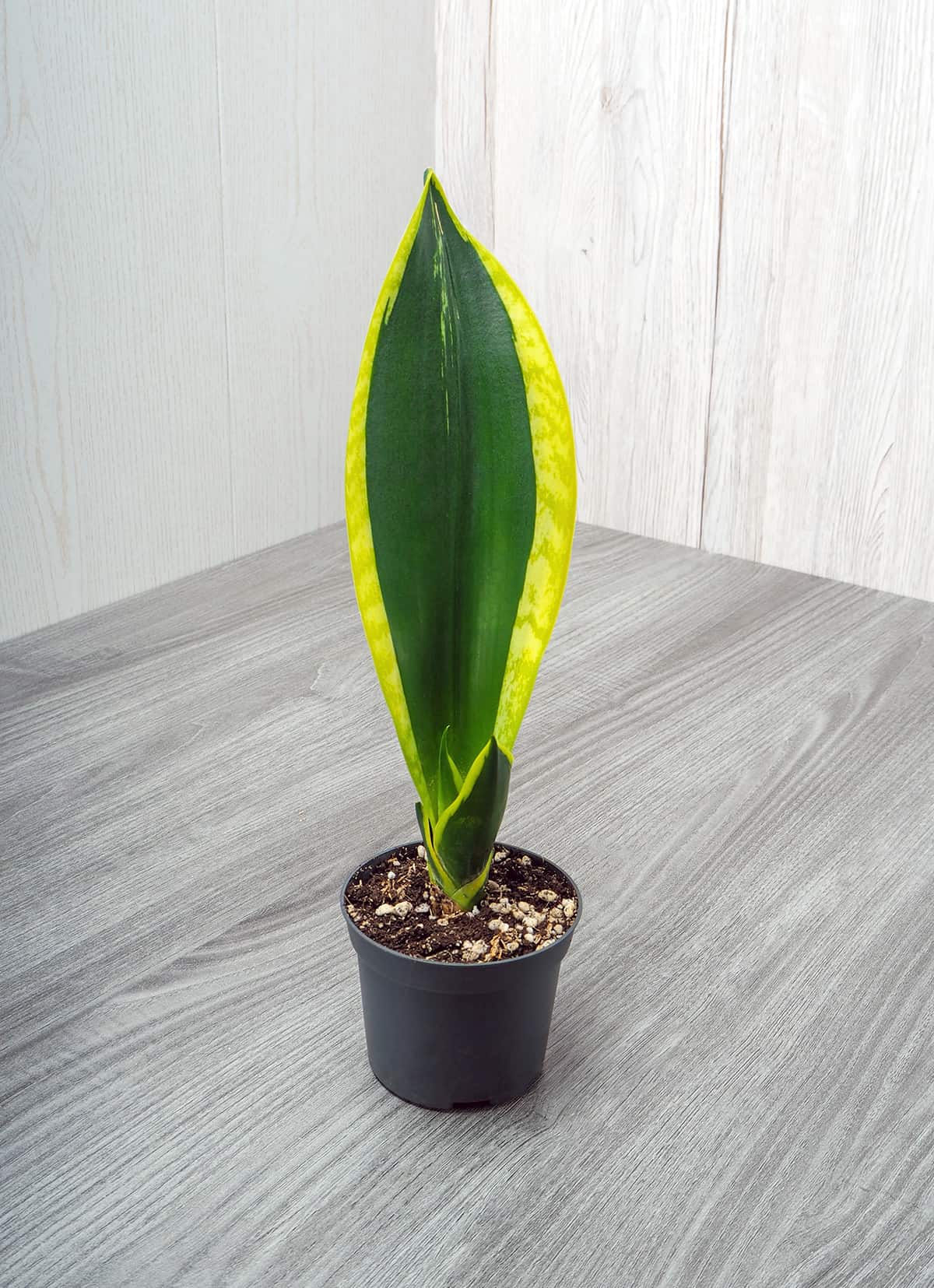
This snake plant is another cultivar of the popular Sansevieria Trifasciata, like the Cylindrica cultivar. It bears little resemblance to the Braided Snake Plant in terms of looks, but they reach similar heights, and the care for these plants is almost identical.
You can identify the Black Gold Snake Plant from the dark green foliage, which has bright yellow contrasting edges. In low light, the dark green and yellow leaves will appear black and gold, hence the name of this plant.
How to Care for a Braided Snake Plant
The Braided Snake Plant is a low-maintenance, easy-care plant that thrives on neglect. It can be grown as an outdoor plant in hot climates but is most commonly kept as a houseplant. Follow these tips to help your Braided Snake Plant flourish.
Light
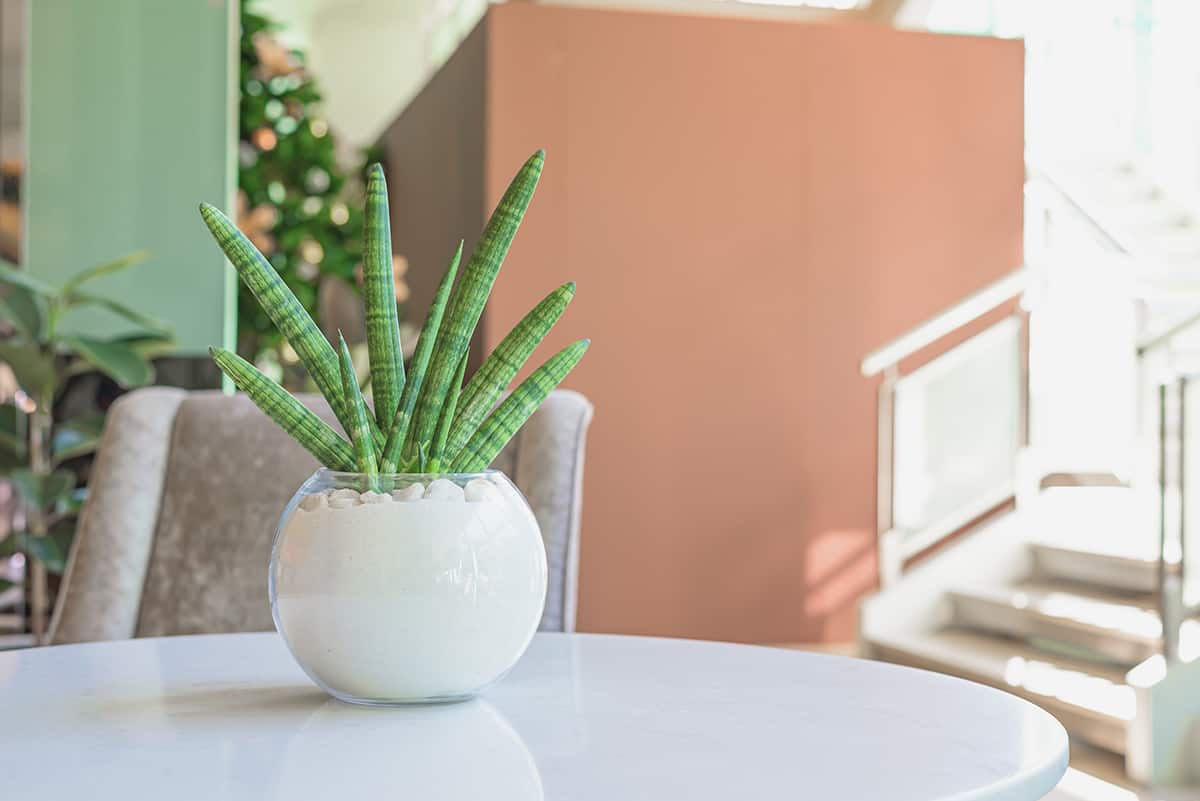
The Braided Snake Plant enjoys a generous amount of light. It can tolerate bright direct sunlight as long as it gets enough time to rest in between. If you want to set your Braided Snake Plant in direct light, allow it no more than 4 to 6 hours each day. The remainder of the day should be spent in a partially shaded position or even in full shade.
The plant requires this amount of time to rest to enable it to cope with direct light. Alternatively, set it in a position of bright, indirect light. Indirect light, such as that which is filtered through window blinds or a tall tree, is suitable for a Braided Snake Plant to remain in all day long. This plant can tolerate a shaded exposure with minimal light, so you can position it in a dark corner, and it will survive just fine, but be warned it will not thrive in this type of environment.
Soil
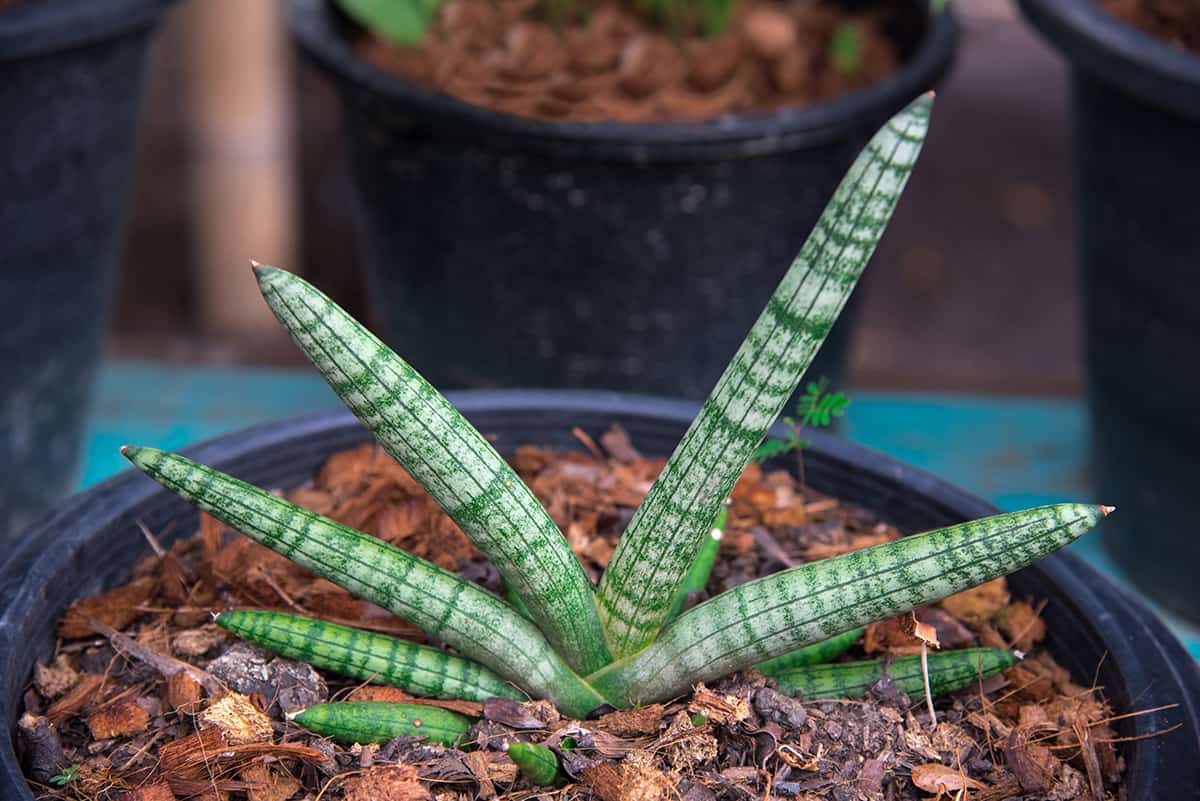
The type of soil you plant your Braided Snake Plant in is very important because it is vulnerable to root rot when it is kept in wet conditions. Clay soil, compacted soil, or any poorly draining soil will hold moisture against the roots of the plant after it has been watered, and this can lead to root rot and the death of the plant.
For the best chance of avoiding this scenario, use well-draining, aerated soil. This will ensure water drains easily away from the roots of the Braided Snake Plant, preventing root rot and the associated issues such as pest infestations.
Water
The Braided Snake Plant does not need to be watered frequently. From May through to September, you will need to water it once and twice a week, depending on its size and what sort of exposure to light it is getting. Plants that receive higher levels of light will need more water than those grown in shade.
You should customize your level of watering to your Braided Snake Plant by checking its soil condition regularly. If the top few inches of the soil feel dry, then the plant should be watered. If you can still feel the moisture in the soil, hold off on watering and test it again in a few days.
Temperature
Braided Snake Plants are accustomed to warm environments in their native home of Angola, so you should aim to ensure they are kept warm at all times. The optimum temperature range for this plant is between 65 and 85 °F; however, it can tolerate infrequent drops in temperature down to 50°F. Average room temperature in homes falls within this temperature range, making the Braided Snake Plant an ideal houseplant. It can be grown outside in USDA hardiness zones 10 and 11.
Humidity
The Braided Snake Plant prefers average humidity levels, much like those typically found in homes. This is another reason why the plant is considered so low maintenance is because it doesn’t require the grower to increase levels of humidity within the home.
How do you create a Braided Snake Plant?
If you have a Cylindrical Snake Plant, then you may wish to braid it. This can be done by following these steps:
- To start with, you need to measure your snake plant to ensure that it has multiple strands of foliage that exceed 12 inches in length. A length of 14 inches minimum is preferable, from soil level to the tip of the leaf, but anything less than 12 inches will be too short to braid with.
- Gently remove your snake plant from its container pot by twisting the pot and firmly but gently tugging on the foliage until it slides out. Remove as much of the soil as possible by brushing it away from the roots with your fingertips. Be careful not to cause damage to the roots.
- Once the snake plant is in a bare-root form you will be able to see that there are several separate clumps of leaves. You need to lay each clump on top of the other so that the leaves all lineup, and then use some twine or a rubber band to tightly tie the plants in position just above the roots. This is the equivalent of tying hair into a hairband before it gets braided. It just makes the process of braiding much easier and neater.
- Next, divide your foliage into three fairly even sections; for example, split 9 leaves into 3 groups of 3, or 6 leaves into 3 groups of 2. If you don’t have a number of leaves divisible by 3, just try to make sure each group is similar in size. You can do this by separating out the thicker leaves instead of grouping them together.
- Now you are ready to begin braiding. If you know how to braid hair or bracelets, then this will be easy, and even if not, it isn’t a hard skill to learn. Take the outermost group of leaves on the left and cross it over the middle group so that it becomes the new middle group. Now take the outermost group on the right, and cross it over the top of the middle group so it becomes the new middle group. Continue this pattern, taking the outer leaves and crossing them into the middle in turn. The leaves of this plant are pliable, so they should be able to be braided fairly easily, but you should still take care not to bend the leaves too harshly or cause damage. The braid should be fairly loose.
- Tie the end of the braid together with twine or an elastic band. If any shorter pieces of foliage have come loose, you can tuck these into the braid to stop them from sticking out and give your Braided Snake Plant a neater look.
- Prepare a container of fresh well-draining soil and set the braided plant in the middle, tucking it in by firmly pushing the soil around its roots. Water the plant heavily to help it settle in, and continue to care for it as usual.
- As your Braided Snake Plant grows, the lower portion of the foliage will, of course, grow straight rather than braided. Since the plant is very slow growing, you should be able to keep it looking neat for several years. When it is time to repot the plant, you can repeat the process and braid it again.
